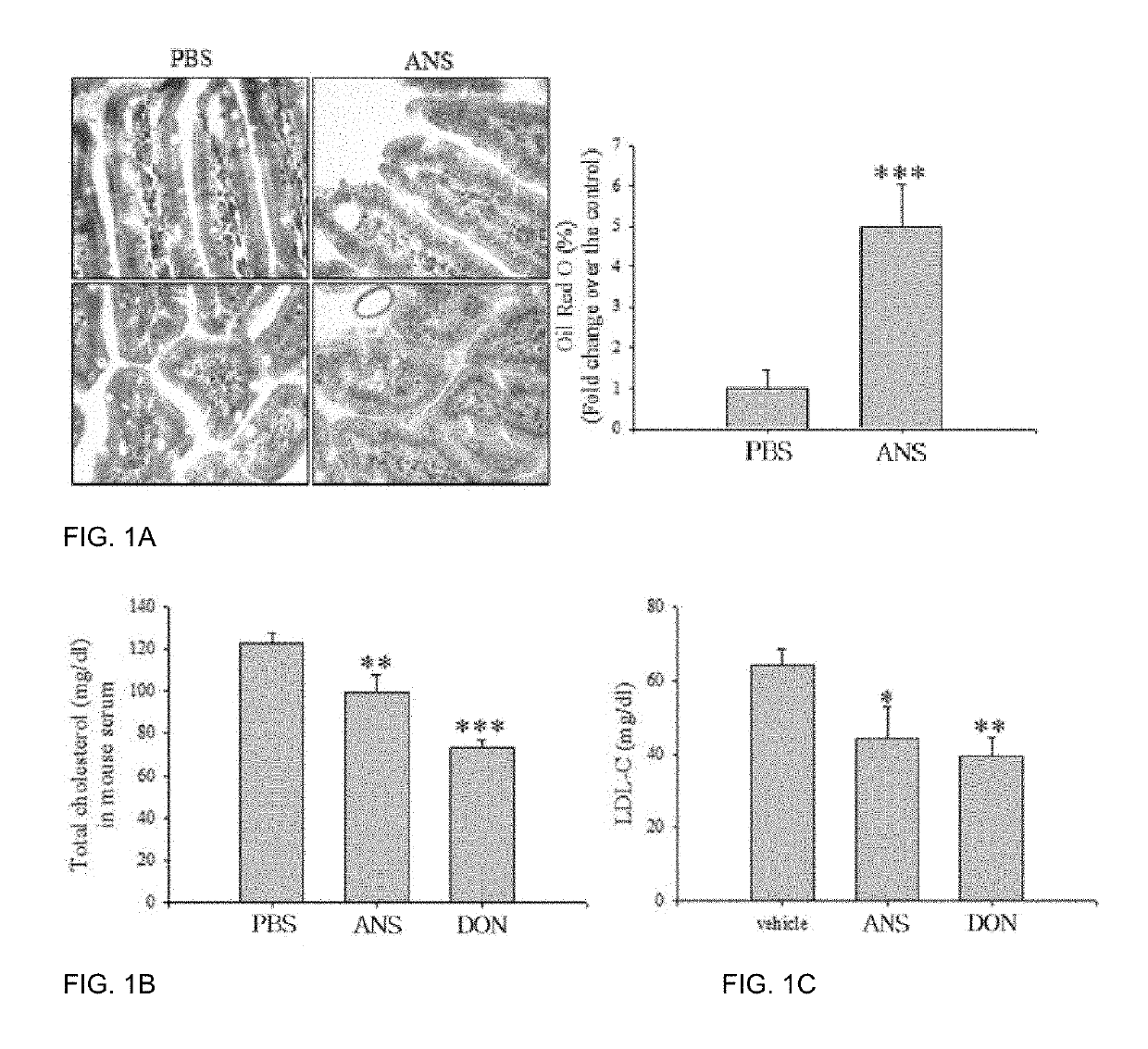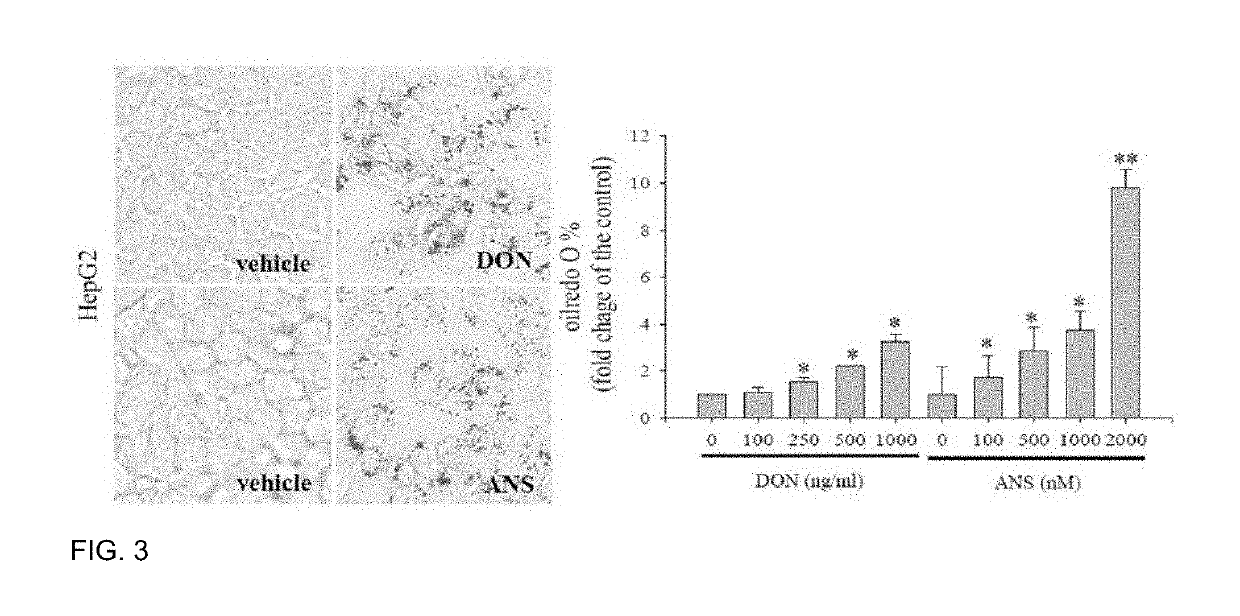Pharmaceutical composition for preventing or treating ldl cholesterol-related diseases, containing ribosome-binding preparation
a technology of ribosome binding and composition, which is applied in the direction of drug compositions, peptide/protein ingredients, transferases, etc., can solve the problems of toxic accumulation of cholesterol in the cell membrane, unelucidated ldl receptor, and fundamental therapeutic agents designed to treat ldl-related diseases. , to achieve the effect of promoting ldl absorption, reducing the level of ldl in the blood, and increasing the expression of ld receptor
- Summary
- Abstract
- Description
- Claims
- Application Information
AI Technical Summary
Benefits of technology
Problems solved by technology
Method used
Image
Examples
example 1
Confirmation of Intracellular Accumulation of Cholesterol Via Use of Ribosome-Binding Chemical Agents for Inactivation of the Ribosome
[0057]The present inventors have examined to identify the effects of ribosome inactivation on the fat accumulation in vivo and in vitro.
[0058]1-1. In-Vivo
[0059]Six-week-old male B6C3F1 mouse (C57B1 / 6J×C3H / HeJ) was purchased from Samtako Bio Korea (Osan, South Korea) for use in experiments to confirm the effect of the ribosome inactivation on fat accumulation. Animal experiments were carried out by animal testing methods as approved by the Laboratory Animal Care Committee (PNU-2010-0291).
[0060]Vehicle, 25 mg / kg anisomycin (ANS) or deoxynivalenol (DON) was administered to the mouse via oral gavage. After 24 hours, immunohistochemistry (IHC) was performed to measure a lipid level, a total cholesterol level and a low-density lipoprotein (LDL) level in a mouse enterocyte.
[0061]Lipid droplets in mouse small intestinal cells were stained via Oil Red O staini...
example 2
Confirmation That Cholesterol Absorption is Mediated by Intracellular LDL Receptor
[0072]The present inventors measured a level of LDL-cholesterol absorption via LDLR (LDL receptor) in enterocytes in order to confirm intracellular cholesterol accumulation. HCT-8 cells were treated with vehicle, 1000 ng / ml DON, or 2 μM ANS for 24 hours. To visualize the LDL absorption, the cells thus treated were stained with LDL-Dylight™ 550 (red). The results are illustrated in FIG. 6. To visualize LDLR expression, the cells thus treated were stained with DyLight™ 488-conjugated LDLR (green). The results are illustrated in FIG. 7.
[0073]As illustrated in FIG. 6 and FIG. 7, it was confirmed that the ribosome inactivation increases the extent of labeled exogenous LDL uptake into the enterocyte. Further, the LDLR expression was also significantly increased by the ribosome inactivation.
[0074]Therefore, the ribosome inactivation stress resulting from the treatment of the ribosome-binding agent may improve...
PUM
| Property | Measurement | Unit |
|---|---|---|
| density | aaaaa | aaaaa |
| pharmaceutical composition | aaaaa | aaaaa |
| density lipoprotein | aaaaa | aaaaa |
Abstract
Description
Claims
Application Information
 Login to View More
Login to View More - R&D
- Intellectual Property
- Life Sciences
- Materials
- Tech Scout
- Unparalleled Data Quality
- Higher Quality Content
- 60% Fewer Hallucinations
Browse by: Latest US Patents, China's latest patents, Technical Efficacy Thesaurus, Application Domain, Technology Topic, Popular Technical Reports.
© 2025 PatSnap. All rights reserved.Legal|Privacy policy|Modern Slavery Act Transparency Statement|Sitemap|About US| Contact US: help@patsnap.com



